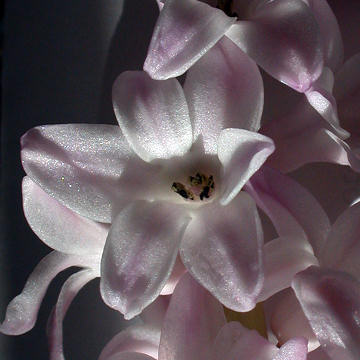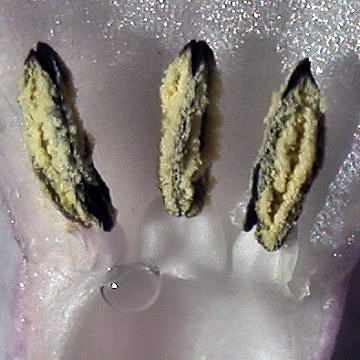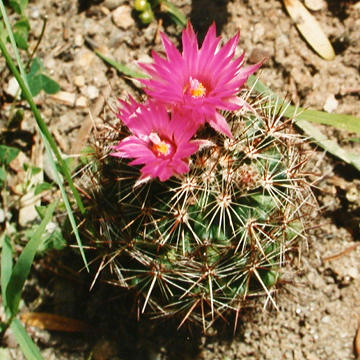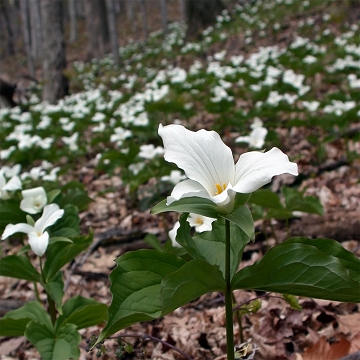Flowers can be characterized based on the position of the ovary in relation to the other parts of the flower. When the floral parts arise from a position below the ovary, the flower is said to be hypogynous (hypo=below; gynous=female) and the ovary superior since it is above the point where the other floral parts are inserted. When the floral parts arise from a position above the ovary, the flower is said to be epigynous (epi=above) and the ovary inferior since it is below where the other floral parts are inserted.
There is another, special case of an inferior ovary where the bottom of the sepals, petals, and stamens are fused into a cup around the ovary called a hypanthium, or floral cup. Such a flower is termed perigynous (peri=around), because the hypanthium surrounds the ovary. The presence of a hypanthium is a characteristic feature of some families of plants, particularly the Rosaceae and Grossulariaceae. I had a few minutes to kill today and decided to dissect a hyacinth flower that was in the lab and to my surprise found that Hyacinthus orientalis also has a perigynous flower. Here is a closeup of an entire flower

Flower cut in half longitudinally (below)

One last image after the ovary was removed so that the insertion of the stamens at the top of the hypanthium is more clearly visible. Also note the drop of nectar near the base of one of the filaments.





